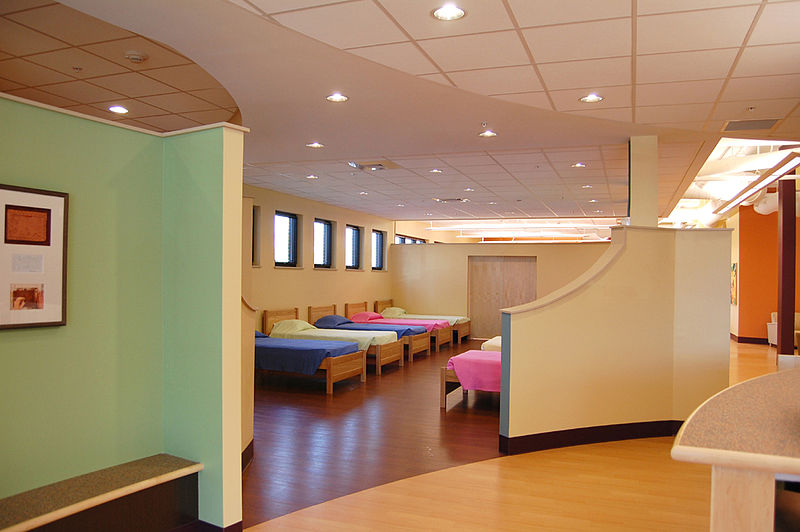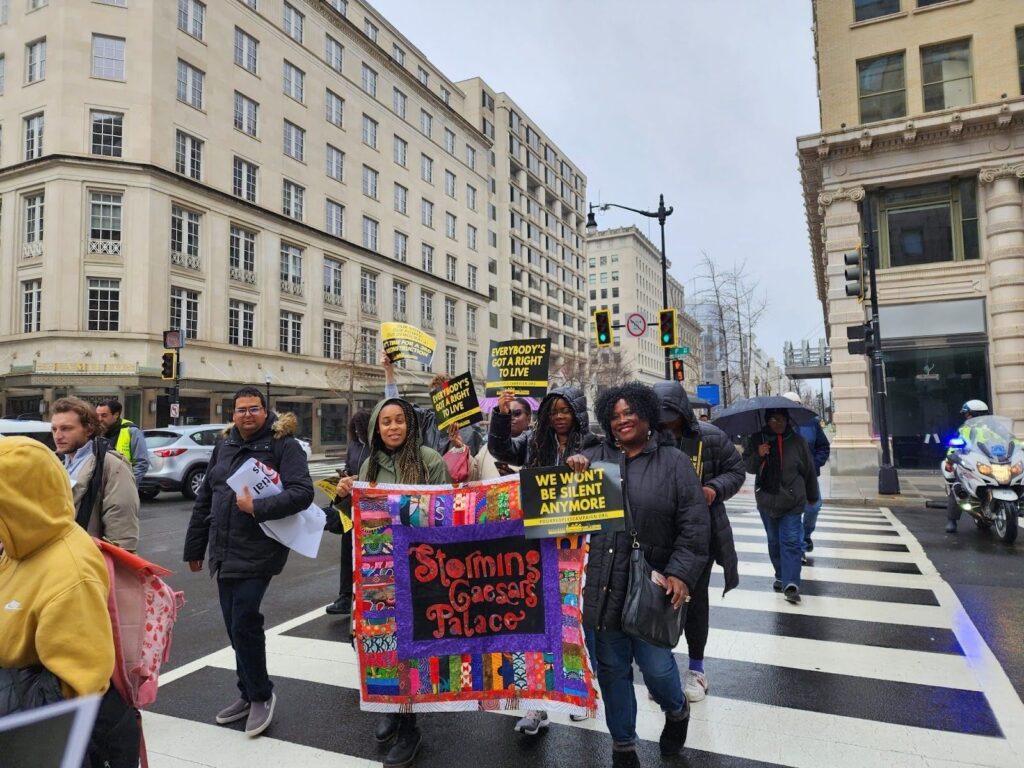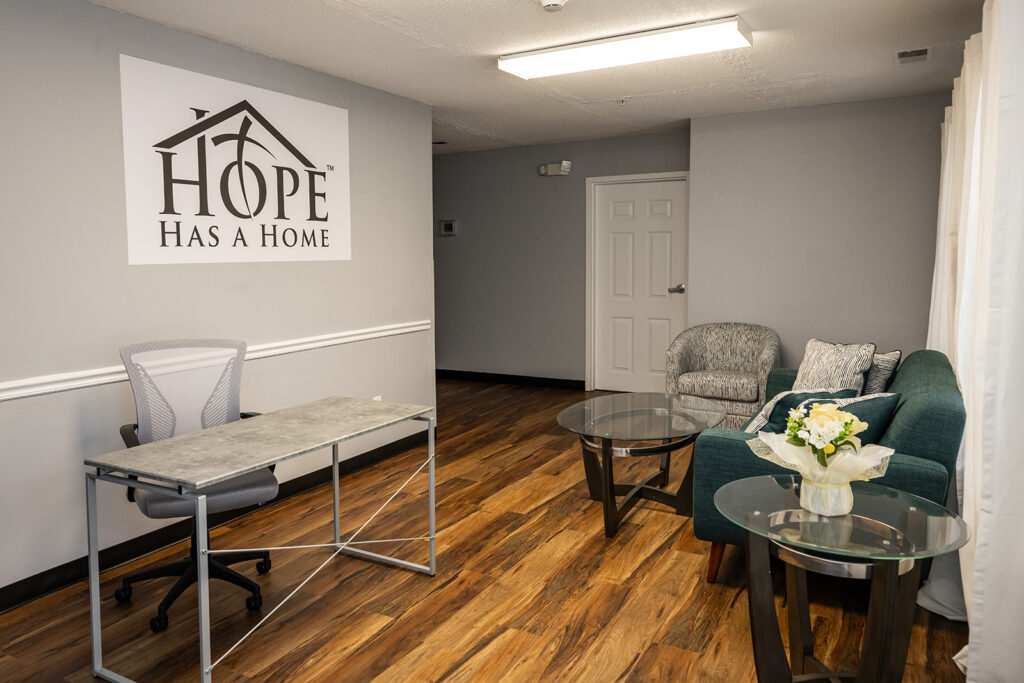The rearrangement of D.C’s emergency shelter network takes another step forward in September, when the Emery School Shelter in Northeast ceases operation as a low-barrier shelter open to all homeless men and becomes a transitional residence for men with steady jobs.
Neighborhood groups have been pressing the city about the problems they say the shelter brings to the area between Gallaudet and Catholic Universities. The upshot of their lobbying will be a smaller different group of residents at Emery, which has been an emergency shelter since the 1980s and has been run by the D.C. Coalition for the Homeless since 1995.
This shift is part of a city-wide trend toward a consolidation of city-funded shelter beds in large facilities on the east side of town – a trend that has prompted concern among homeless advocates, who point to an increasing lack of shelters and other services in downtown areas. At the same time, Emery’s transformation will provide benefit a particular sector of the homeless population – men, ready to take the net step toward getting off the street – giving them access to stable living space and support services.
Michael Ferrell, executive director of the D.C. Coalition for the Homeless said the new Emery would offer “24-hour access to the facility. Residents will have an assigned bed and place to store their personal possessions.” The stability provided by a reliable place of residence will be augmented by support services provided by social workers and employment and substance abuse counselors.
Residents were given formal notice of the change in early August and were offered a chance to apply for places in the new transitional residence program. Those not accepted into the program will be referred to the city’s shelters on New York Avenue in Northeast and on the campus of St. Elizabeth’s Hospital in Anacostia. A shuttle from Emery to those facilities will operate “briefly,” Ferrell said. “Right now, we’re envisioning 30 days.”
Meanwhile, the D.C. Coalition for the Homeless is actively working with Catholic Charities, the Central Union and Gospel Rescue missions, and other homelessness programs to recruit eligible men. Emery’s 100 beds are expected to be filled by the beginning of October.
Many of the participants in the new program may turn out to be current residents at Emery.
“Not everybody [there now is] at rock-bottom,” Ferrell said. “Just because we’re low-barrier doesn’t mean everyone there is on the bottom rung.”
Because the new program will be smaller and free of the disruptions associated with a low-barrier’s shelter’s daily turnover, the transitional housing program may offer participants more individualized support. Ferrell said that the new program will offer shelter staff “the chance to get to know the clients.” A stable population will also help staff administer the program, according to Ferrell, “It has been a challenge to manage Emery, because … in the last five years, we’ve seen increases in the demand for shelter across the city,” he said. As a result, “Emery has operated at or above capacity.”
The new direction for the Emery School shelter has won praise from its neighbors, who had vocally lobbied for change.
The Eckington Civic Association and other local groups raised concerns about the impact of a large low-barrier shelter population in the community, citing problems with trash, substance abuse, and public urination. They pointed out that the shelter adjoins an elementary school and a recreation center, and worried about the activities of shelter residents and clients of other social services programs while in the area.
Eartha Isaac, president of the association, said community members wondered whether the “programs [were] working with people about personal responsibility and good neighbors.”
Community members also stressed the obstacle the shelter presents to attracting to the area what Isaac characterized as “neighborhood friendly businesses,” such as restaurants. Finally, they noted that several other social service programs operate nearby, including a feeding program and a substance abuse treatment center.
The community groups’ discussions with the city ended with a commitment by the city to scale back and refocus the services offered at Emery. That shift is to be accompanied by an increased police presence in the area, street outreach, and new fencing and lighting.
Isaac said that the community eventually hopes to offer more dispersed services. “We have some smaller facilities and you’d never know they were there,” she said. “They blend right in… But with a 180-person facility, you know it’s there.”
Accordingly, area residents are organizing a small task force to help the city identify “locations where smaller facilities could be placed.” And last March, Isaac called for the City Council’s Homeless Services Reform Act to give neighborhood associations and Advisory Neighborhood Commissions a greater role in planning the local placement and delivery of social services.
Whether neighborhood associations can win a formal role in the planning process remains to be seen, but Isaac said, “I think we are now on the radar screen.”








